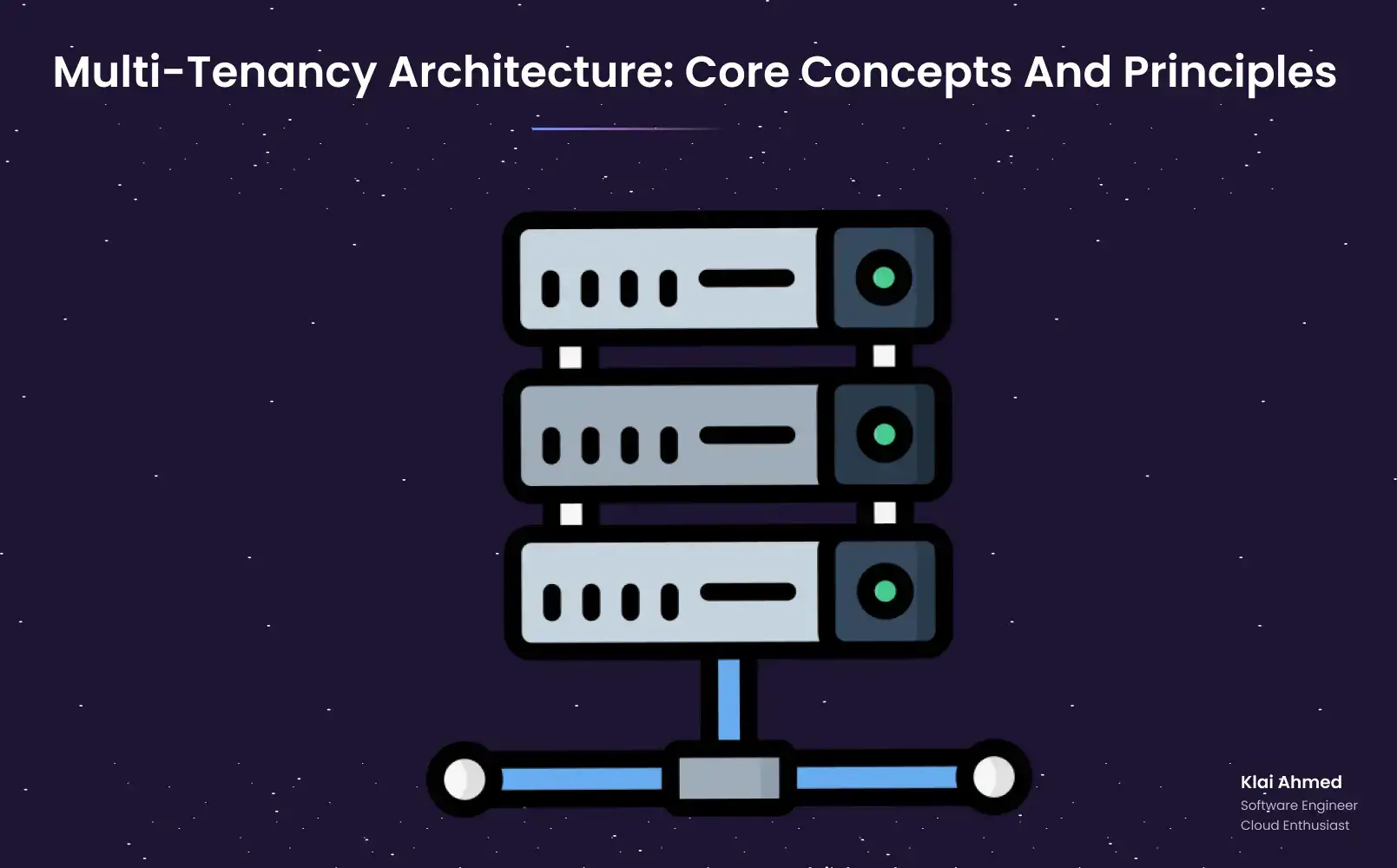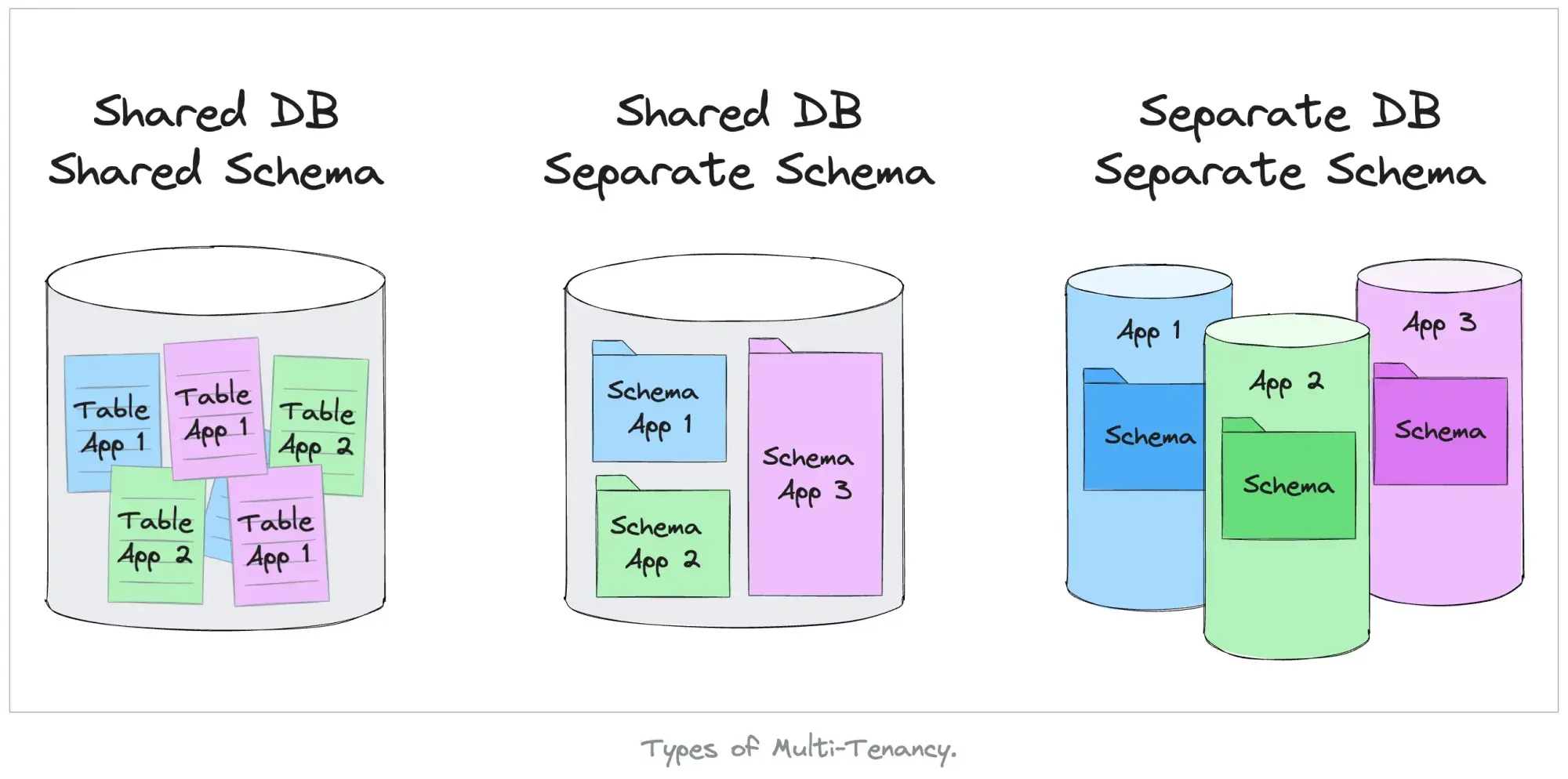Multi-Tenancy Architecture: Core Concepts and Principles

Imagine stepping into a modern shopping mall, where a lot of stores coexist within a shared physical space. Each store boasts its unique offerings, ambiance, and branding, catering to diverse customer needs and preferences. Despite sharing common facilities such as parking lots, walkways, and utility services, each store operates independently, managing its inventory, sales, and customer interactions.

In this bustling environment, the shopping mall serves as a microcosm of multi-tenancy architecture in action. Just as the mall's infrastructure facilitates the coexistence of diverse retail establishments, multi-tenant software applications provide a shared platform for multiple clients or organisations, fostering collaboration and resource optimisation.
In the realm of software architecture, the concept of multi-tenancy finds a fitting analogy in the bustling environment of a shopping mall.
Traditionally, software architectures resemble standalone stores in a shopping mall. Each client or organisation typically operates its separate instance of the software application, complete with its infrastructure, databases, and configurations. While this model offers autonomy and customisation to individual clients, it can lead to resource duplication, maintenance overheads, and scalability challenges.
Key Components of Multi-Tenancy
- Tenant Isolation: One of the fundamental principles of multi-tenancy is tenant isolation, which ensures that each tenant's data, configurations, and user sessions remain segregated from those of other tenants. This isolation prevents unauthorized access and data leakage, safeguarding the integrity and confidentiality of tenant-specific information.
- Shared Infrastructure: In a multi-tenant environment, tenants share common infrastructure, including servers, databases, and networking components. By pooling resources and leveraging economies of scale, multi-tenancy optimizes resource utilization and reduces operational costs compared to maintaining separate infrastructures for each tenant.
- Configuration Flexibility: Despite sharing infrastructure, multi-tenant applications offer configuration flexibility to accommodate diverse tenant requirements and preferences. Tenants can customize their user interfaces, workflows, and business rules while adhering to shared application logic and security policies.
- Scalability and Elasticity: Multi-tenancy architecture facilitates horizontal scalability, allowing the application to scale seamlessly as the number of tenants and user activity grows. Cloud-based multi-tenant solutions leverage auto-scaling capabilities to dynamically allocate resources based on demand, ensuring optimal performance and responsiveness.
Implementation Strategies
Implementing multi-tenancy architecture requires careful consideration of design patterns, database schemas, and security measures. Common implementation strategies include:
Shared-Schema Approach: Using a shared-schema approach where multiple tenants coexist within the same database schema, differentiated by unique identifiers or prefixes.
Tenant-Aware Middleware: Implementing tenant-aware middleware components to enforce tenant-specific security policies, routing rules, and authentication mechanisms.
Benefits of Multi-Tenancy Architecture
- Cost Efficiency: Multi-tenancy reduces infrastructure and operational costs by consolidating resources and leveraging shared infrastructure.
- Scalability: Multi-tenant applications scale efficiently to accommodate growing user bases and evolving business needs.
- Customization and Flexibility: Tenants can customize their user experience and configurations while benefiting from shared application features and updates.
Types of Multi-Tenancy

Shared Database, Shared Schema:
- In this type of multi-tenancy, all tenants share a single database instance and schema. Each tenant's data is distinguished by a unique identifier, such as a tenant ID or key, within shared tables.
- Shared database, shared schema multi-tenancy offers simplicity and efficiency in data management and schema maintenance. However, it requires robust data isolation mechanisms to prevent cross-tenant data leakage.
Shared Database, Separate Schema:
- In this approach, tenants share a common database instance but have separate schemas within the database. Each tenant's data resides in dedicated schema objects, ensuring logical separation and isolation.
- Shared database, separate schema multi-tenancy provides enhanced data isolation and security compared to shared schema approaches. It allows for more granular control over access permissions and schema customization for individual tenants.
Separate Database, Separate Schema:
- In this type of multi-tenancy, each tenant has its dedicated database instance with its schema. Tenants' data is physically segregated at the database level, providing the highest degree of isolation and autonomy.
- Separate database, separate schema multi-tenancy offers maximum data privacy, security, and performance isolation. However, it incurs higher infrastructure and management overheads compared to shared database approaches.
Multi-Tenancy vs. Single-Tenancy Architectures

Scalability and Resource Utilisation:
Multi-tenancy architectures can be likened to apartment complexes, where shared resources such as parking lots and amenities are optimized for efficiency and utilisation. In contrast, single-tenancy architectures resemble standalone houses, offering dedicated resources but potentially underutilising space and infrastructure.
Data Isolation and Security:
Just as condo offer a balance of privacy and community living, multi-tenancy architectures implement data isolation measures to ensure tenant privacy and security. Single-tenancy architectures, like private residences, inherently offer strong data isolation but at the cost of resource duplication and complexity.
Customisation and Flexibility:
Multi-tenancy architectures offer a communal environment where tenants enjoy shared amenities and infrastructure while maintaining some level of customisation. In contrast, single-tenancy architectures provide complete autonomy and customisation akin to owning a standalone property.
Operational Complexity and Maintenance:
Multi-tenancy architectures streamline operational management, much like managing a condo complex with centralised facilities and services. Single-tenancy architectures, resembling individual houses, require more extensive maintenance and management efforts due to decentralised resources and infrastructure.
Now, let's examine how multi-tenancy architecture manifests in real-world applications across various industries, showcasing its versatility, scalability, and impact on business operations.
Software as a Service (SaaS) Platforms
Software as a Service (SaaS) platforms epitomize the power of multi-tenancy architecture in delivering scalable, cost-effective solutions to a broad spectrum of users. SaaS providers leverage multi-tenancy to serve multiple customers from a single instance of the application, offering on-demand access to software functionalities, data storage, and infrastructure resources. Examples include:
Leading CRM platforms such as Salesforce leverage multi-tenancy to provide organizations with a unified platform for managing customer interactions, sales pipelines, and marketing campaigns. Through multi-tenancy, Salesforce serves diverse clients while ensuring data isolation and scalability.
ERP systems like NetSuite utilize multi-tenancy to streamline business processes, integrate disparate functions, and centralize data management for organizations of all sizes. Multi-tenancy enables NetSuite to deliver a comprehensive suite of ERP functionalities to diverse clients efficiently.
Cloud Computing and Infrastructure Services
Multi-tenant architectures underpin cloud services such as:
- Amazon Web Services (AWS): AWS offers a wide range of cloud services, including compute, storage, database, and networking solutions, built on multi-tenant architectures. Through multi-tenancy, AWS enables businesses to deploy applications, scale resources, and optimise costs dynamically.
- Microsoft Azure: Microsoft Azure leverages multi-tenancy to deliver cloud services and enterprise solutions tailored to diverse industries and use cases. Azure's multi-tenant architecture enables seamless integration, scalability, and reliability across its portfolio of services.
Collaboration and Productivity Tools
Examples include:
- Google Workspace (formerly G Suite): Google Workspace leverages multi-tenancy to provide organisations with a suite of productivity tools, including Gmail, Google Drive, Docs, Sheets, and Meet. Through multi-tenancy, Google Workspace enables secure, real-time collaboration and document sharing among users.
- Microsoft 365 (formerly Office 365): Microsoft 365 utilises multi-tenancy to deliver productivity applications such as Outlook, Word, Excel, PowerPoint, and Teams to organisations worldwide. Multi-tenancy enables Microsoft 365 to deliver consistent user experiences, security, and compliance across diverse customer environments.
Conclusion
Real-world applications of multi-tenancy architecture demonstrate its versatility, scalability, and transformative impact across industries. From SaaS platforms and cloud services to collaboration tools and productivity solutions, multi-tenancy enables organisations to deliver scalable, cost-effective software solutions while ensuring data isolation, security, and compliance.

